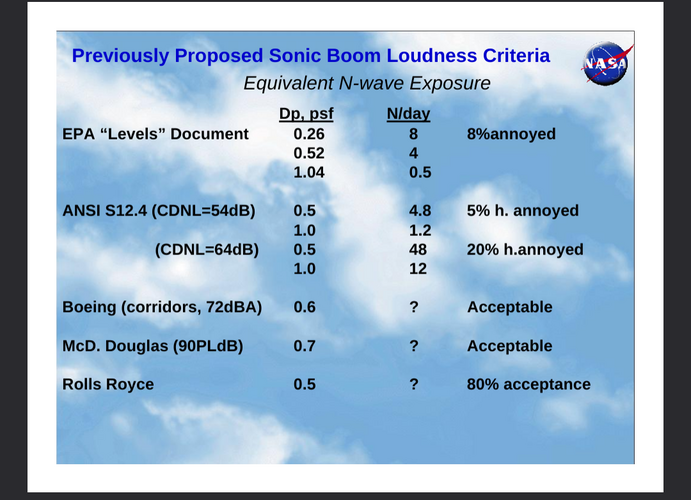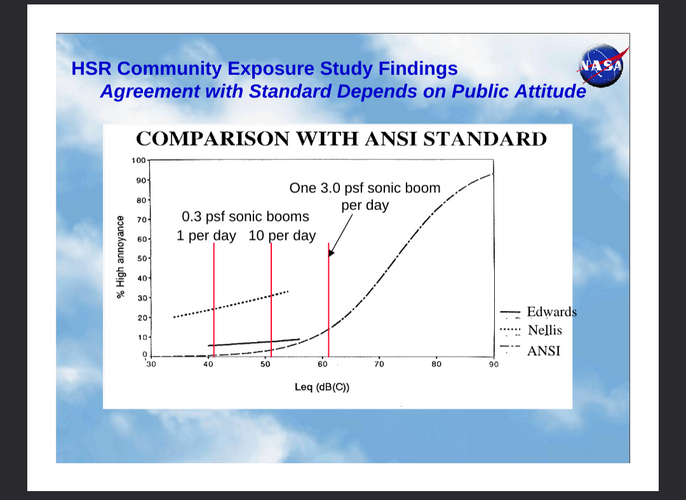
The Lockheed Martin / NASA X-59 roll out at USAF Plant 42, Palmdale, CA. 01-12-24
The Lockheed Martin / NASA X-59 roll out at USAF Plant 42, Palmdale, CA. 01-12-24

You did miss some sarcasm in there.Yup. The trick is *what* particulate. Something that will reflect sunlight during the day and filter down out of the sky by night and not cause environmental ruin. I wonder if studies can determine whether getting spewed by an SST would be better than a subsonic jet.
I guess that's why they're called testbeds...
I guess that's why they're called testbeds...
Because the X59 will fly to determine what the maximum legally allowed sonic booms would be.The difference being that the SSBD tried a novel and possibly practical configuration, whereas the X-59 is a configurational dead-end that could have come off a 1950s sketchpad.
Why not put the money towards something potentially practical, like an airliner-proportioned fuselage using adjustable aerospikes and ventral ramps? Then we'd get sound-pressure data plus a starting point for a usable design.
Can you elaborate more on this deep insight?The difference being that the SSBD tried a novel and possibly practical configuration, whereas the X-59 is a configurational dead-end
You are grossly misunderstanding the roles of the two aircraft.The difference being that the SSBD tried a novel and possibly practical configuration, whereas the X-59 is a configurational dead-end that could have come off a 1950s sketchpad.




Good, I want the data for acceptable sonic boom footprint soon! (Yeah, it's gonna be like 4-5 years out, minimum. Doesn't stop me from wanting it sooner!)


Right. All that data shows that basically NO sonic boom would be acceptable at 0.3lb/ft^2 overpressure levels, looking at the Nellis data showing ~25-30% high annoyance.Plenty of studies have already been carried out. We know what people will tolerate; the USAF flew hundreds of sorties in the 1960s and 70s to determine that.
What we don't know is how to build a practical airframe to achieve that.
View attachment 760420View attachment 760421
